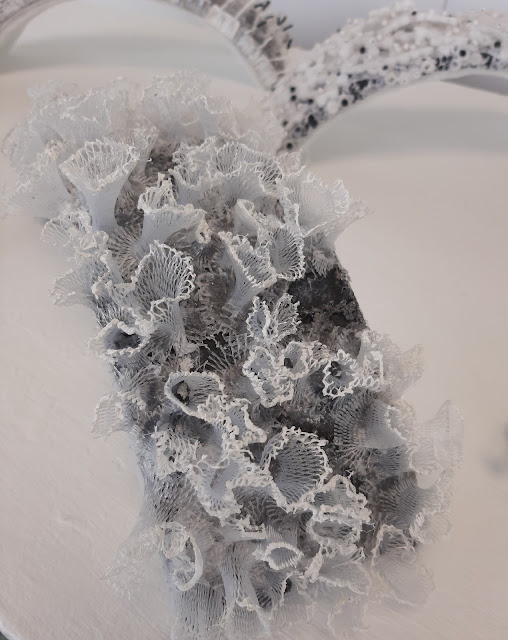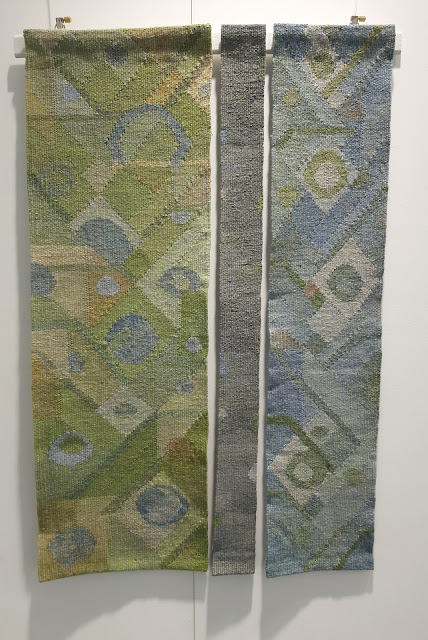Many many moons ago, when Darling Daughter was just a small person (she will be 39 in a couple of weeks!) I fell in love with some yarn by Novita, it was called Brazil, and had rainbows in the mohair mix. I just had to buy it, but had no idea of what to knit with it and, as I was rather short of money in those days, didn’t really buy enough for anything, just 7 balls. There were four colours, black, a blue green, golden oranges and a soft cream. They were tucked away, along with many other yarns, in my stash, and have been through five house moves since then.
Last year I had the pleasure of cruising up the Norwegian coast with Stitchtopia. As with all their trips there was a project involved, in this case a cowl, inspired by the Northern Lights. Our knitting tutor bought some suitably colourful wool with her to make up our project packs but, a key word there ..... it was wool. A cowl fits snugly round the neck, that is the point, and my skin gets a bit excitable when it is snuggled up against pure wool, so sadly that project was abandoned, but not the concept.
Around Christmas time I saw a wonderful shawl, knitted by a friend, which sparked further ideas. Very simple to knit, involving mitred squares which gradually built up to a large triangle, I realised this might embody those Northern Lights, which so thrilled me at 5am on the prow of our ship in the Norwegian Sea.
The project was begun, each square would have flashes of an alternate colour creating zigzags of greens, purples and golds to simulate those fugitive but wonderful displays. The dark came first, for the night sky,
I realised part way in that I still didn’t have quite enough yarn, so there was much weighing and recording of what it took to complete each square. Further secondary yarns were bought in, would I manage to finish and keep the concept alive?
I also realised that, as well as the Northern Lights, I was knitting the autumn colours of my garden
I’m very glad to say I managed to make those yarns last. The shawl was finished this week. It is as wide as our sofa, goes down my back to the base of my spine, and keeps me beautifully warm as Autumn approaches. And I can arrange it around myself in such a way that the top stands away from my neck, so no tickly, itchy, spine shivering from that mohair!































































